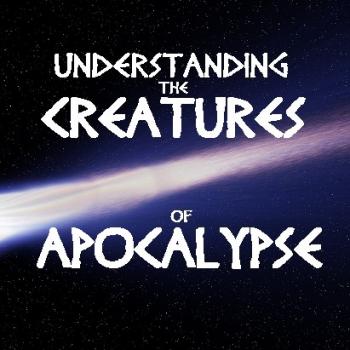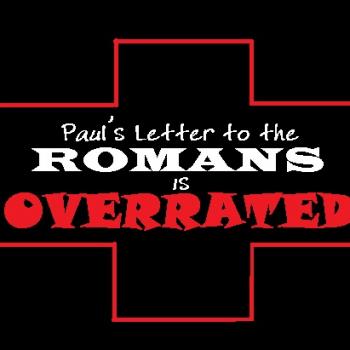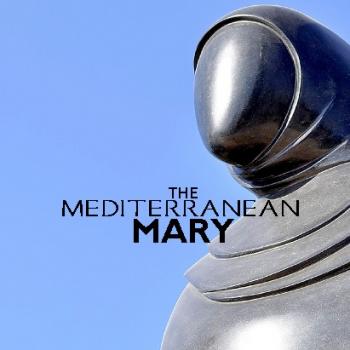
Gospels, whether canonical or not, present difficulties to scholars wishing to learn about the historical Jesus.
Gospels, like inspiration and incarnation, are a messy business! Last time, we compared traditions about Jesus’ sayings and doings, and their variations in the canonical Gospels. Our New Testament has four canonical Gospels—“Mark,” “Matthew,” “Luke,” and “John.” But in the first centuries after Jesus’ ministry, many more gospels were produced by the early Jesus groups than just those four. We count at least twenty-eight other gospels that existed once. Scholars like Richard Rohrbaugh believe that once there existed as many as close to sixty gospels!
The majority of these were all destroyed or otherwise lost. But early Jesus group authors and later (post-325 CE) Christian writers quote and allude to them. Sometimes all we have of them is a sketchy comment. Sometimes marvelous discoveries are made, like the Gnostic library discovered in upper Egypt, back in 1945.
Although the Church only recognizes four canonical Gospels, biblical scholarship and researchers into the historical Jesus make use of what they can from these other gospels. Many early Jesus group writers quote Jesus, and many of these other Gospels purport to carry the words of Jesus.
“Where Two” and Presence
Matthew 18:20—
[Jesus said] “For where two or three are gathered in my name, there am I in the midst of them.”
Oxyrhynchus Papyrus 1.5—
[Jesus said] “Where there are two, they are not without God; and where there is one alone, I say, I am with him. Raise the stone, and there you will find me; split the wood and there I am.”
Gospel of Thomas, Logion 77—
[Jesus said] “I am the light that is over all things. I am all: from me all came forth, and to me all attained. Split a piece of wood; I am there. Lift up the stone, and you will find me there.”
Look carefully at the Jesus-saying in “Matthew” and the one found in the Oxyrhynchus Papyrus. They are similar, no? Topic-wise they are related if not identical. But when we turn to the Sayings-Gospel of Thomas, the differences become more pronounced. How much of those three statements is traceable back to the historical Jesus? How would you determine that? The shepherding authority of our Church does not teach that the canonical Gospels record the exact words of our Lord, verbatim. There is no insistence that the faithful believe that, accept the demands of idolaters of the false god Certitude (i.e., fundamentalists).
A scholar like Richard Rohrbaugh would ask: could the historical Jesus actually have said, “split a piece of wood; I am there… Lift up the stone, and you will find me there”? Assume for a moment that he did. If he did, then, why is it found in no other gospel that we have? And why does the Oxyrhynchus Papyrus link this statement with a comment about two (of which we also see in “Matthew”)?
We simply don’t have metaphysical certitude how much of those above statements came from the historical Jesus and how much of all that is “commentary” by early users of the Jesus sayings. That goes not only for extra-biblical documents such as Oxyrhynchus Papyrus and the Sayings-Gospel called “Thomas” (whether its pre-Gnostic or Gnostic forms), but also the canonical Gospels as well!
Fulfill or Destroy… What?
Matthew 5:17—
[Jesus said] “Do not think that I have come to abolish the law and the prophets; I have come not to abolish them but to fulfill them.”
Gospel of the Ebionites—
[Jesus said] “I have come to destroy sacrifices; and if you do not stop making sacrifices, the wrath of God will not leave you.”
Gospel of the Egyptians—
[Jesus said] “I have come to destroy the works of the female.”
Dr. Rohrbaugh notes the tremendous contrast between the Gospel we call “Matthew” and the Gospel of the Ebionites! Whereas the Matthean Jesus group considers the Torah norms valid and permanent, the Gospel of the Ebionites claims Jesus came to destroy what the Torah requires—sacrifices! Each of these two supposed sayings of Jesus are in 180 degrees opposition to the other. We must ask with Rohrbaugh and friends: which of these statements did the historical Jesus say?
We are informed by Rohrbaugh that the community that the Ebionites were an extremely poor Jesus group. Such people, says Rohrbaugh, could not afford Temple sacrifices. Would you sacrifice the only lamb your family has? Never!
But don’t forget about the Gospel of the Egyptians—“I have come to destroy the works of the female.” What could that mean? Rohrbaugh says that this referring to childbearing and giving birth. Rohrbaugh says groups like the Shakers show us that even today there exist Christians who, at least indirectly, follow that. But did the historical Jesus actually say he came to destroy the works of the female? How would you determine that?
The Golden Rule
Tobit 4:15—
And what you hate, do not do to anyone.
Matthew 7:12—
[Jesus said] “So whatever you wish that people would do to you, do so to them.”
Didache 1:2—
Whatever you do not want done to you, do not do to another.
Here we see three different expressions of the so-called “Golden Rule.” In Tobit we read it in a negative form (do not do…). The author we call “Matthew” expresses it positively (do so…). The Didache is an early Jesus group writing, composed ca. 125 CE—it gives the “Golden Rule” in the negative form again.
Rohrbaugh looks at all of these and asks: Did the historical Jesus say the “Golden Rule”? Did he say it in both forms? Or did he use only one form? If he did, from where did he get it? Did he borrow it from Tobit? Could it be he thought up the same thing himself, without reference to an earlier source? Certainty about this eludes us! How would you determine the likelihood of any of these possibilities?
The Meaning of the Parable is??
Following Rohrbaugh, in an earlier blog post we observed that when people give sermons and homilies on the parables of Jesus, they always add something that, to them, explicitly states what Jesus must have meant. Preachers and homilists love adding to Jesus’ stories such an encapsulating punchline. This is an ancient tradition! Even the New Testament Jesus groups did this, adding concluding punchlines drawn from a variety of different times and locations. They would tell the same parable, but give it different punchlines which totally changed the story’s meaning! Preachers do this in the 21st century as preachers did this in the first Jesus groups.
This is on display with Jesus’ Parable of the Great Banquet seen differently in Matthew 22:1-13, Luke 14:15-24 and the apocryphal Sayings-Gospel of Thomas, Logion 64. Each tells the parable differently, giving a different punchline-point to the same basic story, completely altering the meaning!
To “Matthew” it means—Many are called, but few are chosen!
To “Luke” it means—None of those invited will taste my dinner!
To “Thomas” it means—Buyers & merchants will not enter the places of my Farther!
What the hell does it mean? Those are three COMPLETELY different meanings! Dr. Rohrbaugh explains that it becomes quite clear when scrutinizing the parables is that, from gospel to gospel, not only does the setting change. The conclusion and “moral to the story” also changes! Rohrbaugh asks us: were any of these three conclusions the intention of the historical Jesus? How would you determine that?
The First and Greatest of the Disciples
Who were the first disciples called by Jesus? And who was the most important follower of Jesus? Depends on which gospel you are reading. According to the Fourth Gospel we call “John,” Andrew is the first follower of Jesus and Lazarus is the most important disciple. Don’t like that fellow Catholics? Take that up with the anonymous author we call “John.” Or better yet, stop aping fundamentalist Protestants, turn off EWTN and other such rubbish and cease PROOFTEXTING.
So according to John chapter 1,
1. Andrew
2. Unnamed Beloved Disciple (really Lazarus of Bethany, a Good Shepherd)
3. Simon called Kephas (until the appended chapter 21 is depicted as stupid and a mere hireling)
4. Philip
5. Nathanael
But according to the Synoptic Gospels,
1. Simon Peter (first and most important)
2. Andrew
3. James son of Zebedee
4. John son of Zebedee
As we will see next week, the Synoptics, following “Mark,” have this calling in Galilee while fishing, and all four disciples are part of the Jonah-Zebedee fishing syndicate. But “John” has the Jesus Movement form in Judea, not Galilee. This cannot be harmonized. The Gospels never were meant to be 21st century fact-precise biographies.
Other Gospels, such as the Sayings-gospel of “Thomas,” and apocryphal writings, such as The Apocryphon of James, disagree with all of this. They remember James the Just, the brother of Jesus, to be the first and greatest follower and leader of the rest.
Other Gospels??!!
Scholars like Rohrbaugh explain that once scholars looking for the historical Jesus’ actual words and deeds limited themselves the four canonical Gospels. But no longer. Today biblical scholarship takes everything that claims to be a quote or deed of Jesus seriously. Scholarship assesses all of these claims under the scholarly criteria for being probably historical or a later reflection of the Jesus groups.
Rohrbaugh says that if you were to collect every known Jesus-saying from every source that has ever been found, you would have exactly 503 Jesus-sayings. That’s how many Jesus-sayings exist. But it isn’t easy determining which of these the historical Jesus actually said!
As we said before, when it comes to historical research, high probability equals moral certainty. Historical scholars have developed and use various criteria for determining what materials in the Gospels conform to the historical situation of Jesus. These would be features of the Gospels that were not invented by the later Jesus groups—they actually happened. When multiple criteria working in concert confirm something historical fact about Jesus, we derive the highest probability and moral certainty that it did, in fact, happen.
“Upon this Rock…”
Consider, for example, the Jesus-saying in the Gospel called “Matthew”—
Matthew 16:18
[Jesus said] “And so I say to you, you are Peter, and upon this rock I will build my ekklesia, and the gates of the netherworld shall not prevail against it.”
Although this may alarm quite a few prooftexting Catholic fundamentalists, as alleged Jesus-sayings go, this particular verse isn’t difficult for biblical scholars like Rohrbaugh and friends. The historical Jesus could never have said this for several reasons. Go see yourself: compare Matthew 16:13-20 and the earlier Mark 8:27-30 on which it depends as literature. Do that and only a psychological block could prevent you from seeing that “Matthew” has obviously augmented, embellished, and added details to a Markan story that earlier author never intended. Such as? Such as Jesus praising Peter for his confession, bestowing on Peter the keys to theocracy, the word ekklesia or assembly for “Jesus group,” and authoritative binding and loosing.
By the way, don’t sweat Catholics! None of this delegitimizes the later evolution of the Petrine Ministry and the papacy. It does not demolish the continuity (within development!) of the Church stemming out from the first century Jesus Movement. But it does expose fundamentalist Catholics prooftexting triumphalism. A prooftext without context is a pretext. Citing verses is fine, in context, but never prooftexting! Stop prooftexting!
Jesus or the Spirit of Jesus?
Rohrbaugh says that, unlike the case of Matthew 16, it is usually extremely difficult to distinguish when the historical Jesus from his later followers. Theological beliefs make this even harder! Rohrbaugh says that the early Jesus groups simply did not make a sharp distinction between the sayings of the historical Jesus and those of the Spirit of Jesus in the Body of Christ.
According to Rohrbaugh, our biblical ancestors in the faith lacked our Western obsessions with facticity, historical exactitude, accuracy, and precision. Their interests were theological, not that historical. So Rohrbaugh says that if an ancient Jesus group could extrapolate from Jesus and arrive at wisdom from “the Sprit of Jesus,” well, that was considered a Jesus-saying.
“Can I Have a Witness?”
The Gospel from yesterday (John 1:29-34) gives us a glimpse of the very different ways Mediterraneans (like our Biblical ancestors) and 21st century Westerners perceive things. Despite “Luke” claiming that John the Baptist and Jesus were kin, in the Fourth Gospel John found it difficult to recognize Jesus (John 1:30, 33). Nevertheless, somehow John calls himself a “witness” to Jesus. This would never fly in an American court, folks. But it’s very Mediterranean.
“Can I have a witness to testify?” the Christian preacher bellows. Well, if it’s going to be a biblical (read Mediterranean) witness, better forget CSI, Sherlock Holmes, all the court-room, police procedurals you’ve watched. Forget eyewitness testimony and factual veracity. That’s all Western.
What the cultural world of the Bible expects of its witnesses is very different than what Western Christians imagine. To “see” in the Mediterranean often means to confess what you feel, imagine, presume, or desire, most especially if it helps the group-self. This is witness and testimony in the Biblical world.
More to come, later…












